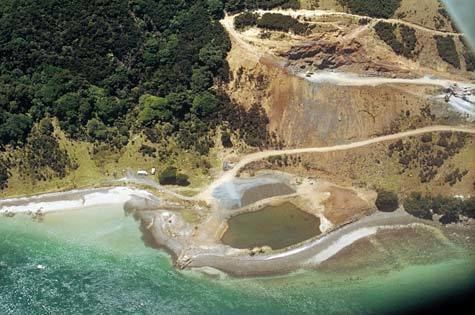Country New Zealand Local time Wednesday 9:23 PM | Population 837 (2006) | |
 | ||
Weather 18°C, Wind E at 16 km/h, 72% Humidity | ||
Houhora is a locality and harbour on the east side of the Aupouri Peninsula of Northland, New Zealand. It is 41 km (25 mi) north of Kaitaia. Waihopo, Te Raupo, Pukenui, Raio and Houhora Heads are associated localities on the southern shores of the harbour. State Highway 1 passes through all these localities except for Houhora Heads. Te Kao is 24 km north west, and Waiharara is 22 km south east.
Contents
Map of Houhora 0484, New Zealand
The harbour is long and narrow, mostly sheltered but with exposed sand banks at low tide. There is a deep channel along the southern shore as far as Pukenui Wharf. Mt Camel/Tohoraha (also called Mt Houhora) is a 236-metre hill forming the North Head. The South Head is a flat area.
The population was 837 in the 2006 Census, a decrease of 78 from 2001.
History
Houhora Mountain was the first part of New Zealand that the early explorer Kupe saw, but he thought it was a whale, according to Māori legend. Houhora was a Māori base settlement in the early 14th century. Snapper, seals, dolphins, moa and other birds were food sources.
James Cook named Mt Camel, on the north head of Houhora Harbour, on 10 December 1769. He described it in his log as "a high mountain or hill standing upon a desert shore."
Te Houtaewa was a Te Aupōuri athlete, who was killed at Pukenui during the Musket Wars of the early 19th century.
Hone Heke was defeated by Tāmati Wāka Nene in the Battle of Te Ahuahu at Pukenui on 12 June 1845.
In the 19th century, Houhora Harbour provisioned whalers, and residents mounted their own whaling expeditions in open boats. Three families - Wagener, Subritzky and Yates - settled in the area to farm and trade. The Subritzky family, who arrived near Motueka in 1843, claim to be New Zealand's first Polish settlers. They moved to Australia and then to Houhora Heads. Their homestead there took two years to build in the 1860s. It was sold to a member of the Wagener family in 1897.
A lifeboat from Elingamite, which was wrecked on the Three Kings Islands on 9 November 1902, arrived in Houhora the following day with 52 survivors. One of the whalers immediately was dispatched to intercept any vessel along the coast to divert it to the Three Kings. This mission was successful.
Notable people
Education
Pukenui School is a coeducational full primary (years 1-8) school with a decile rating of 3 and a roll of 75.
Attractions
The Wagener Museum at Houhora Heads was built by W E Wagener. It contained an eclectic collection of artefacts, with a particularly comprehensive of seashells. In 2003 the museum closed and a substantial part of the collection was sold off. The adjacent Subritzky Homestead, largely restored, is also open to the public. To access the homestead please ask at the Houhora Heads Motor Camp office.
